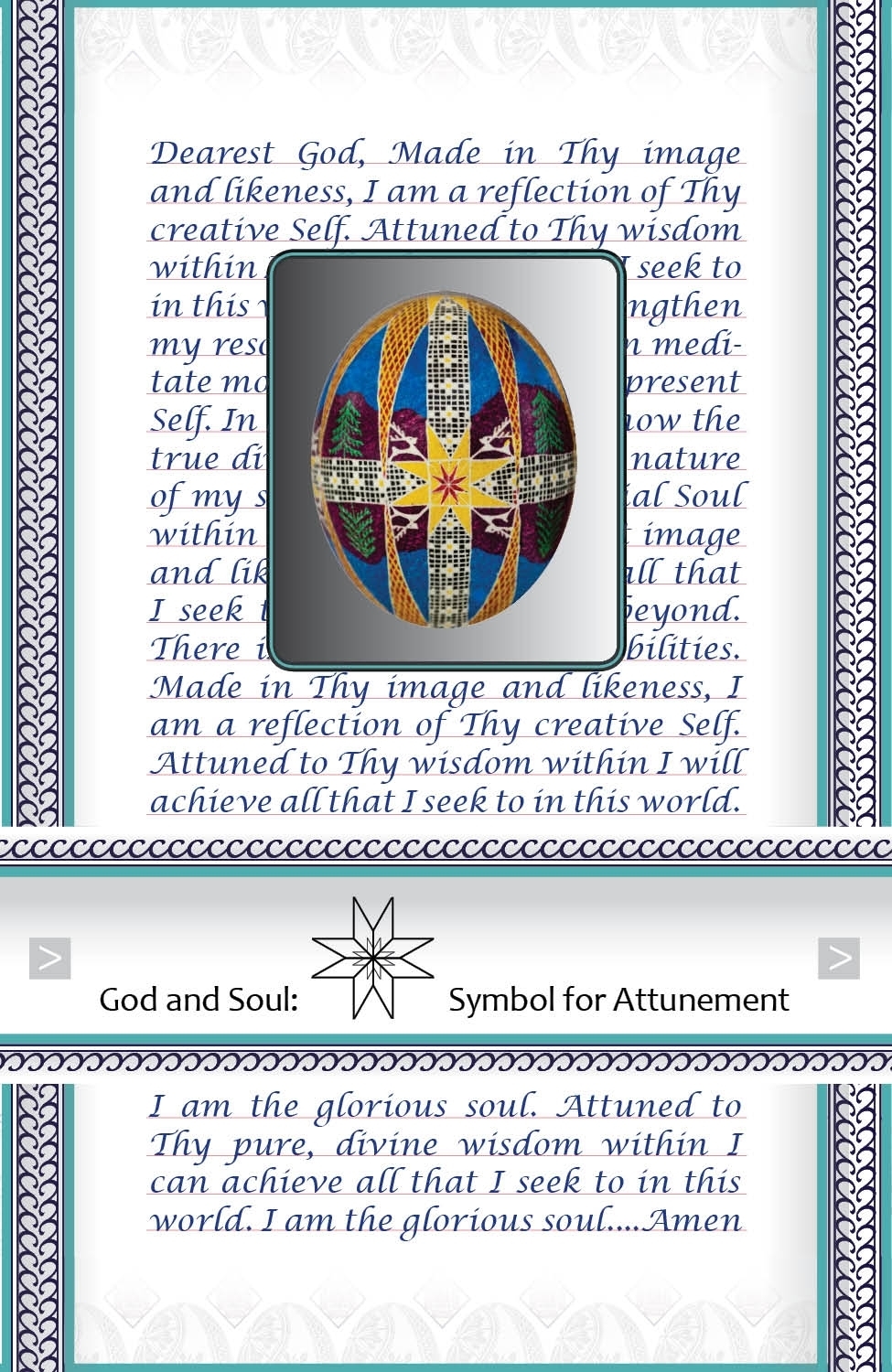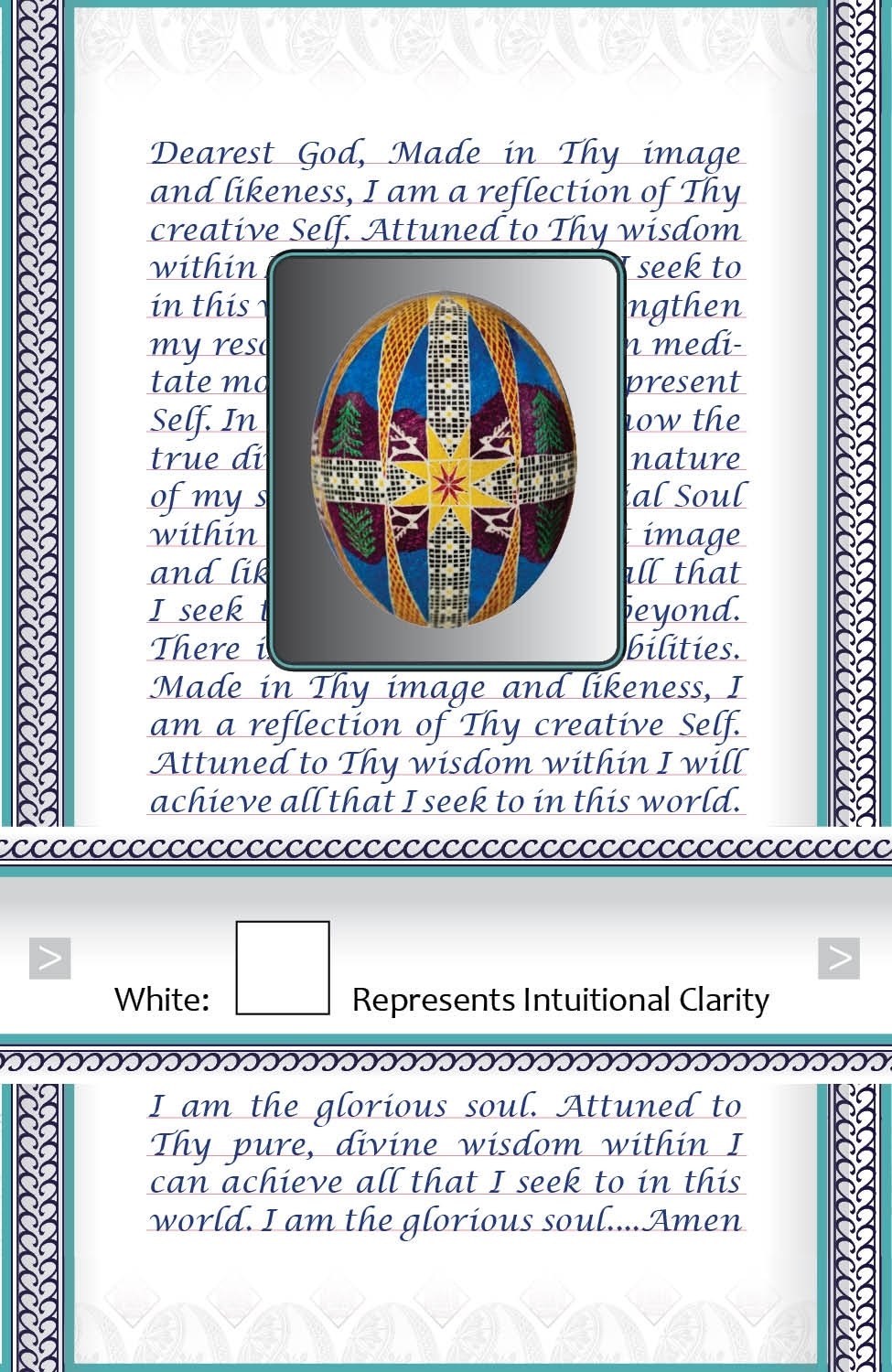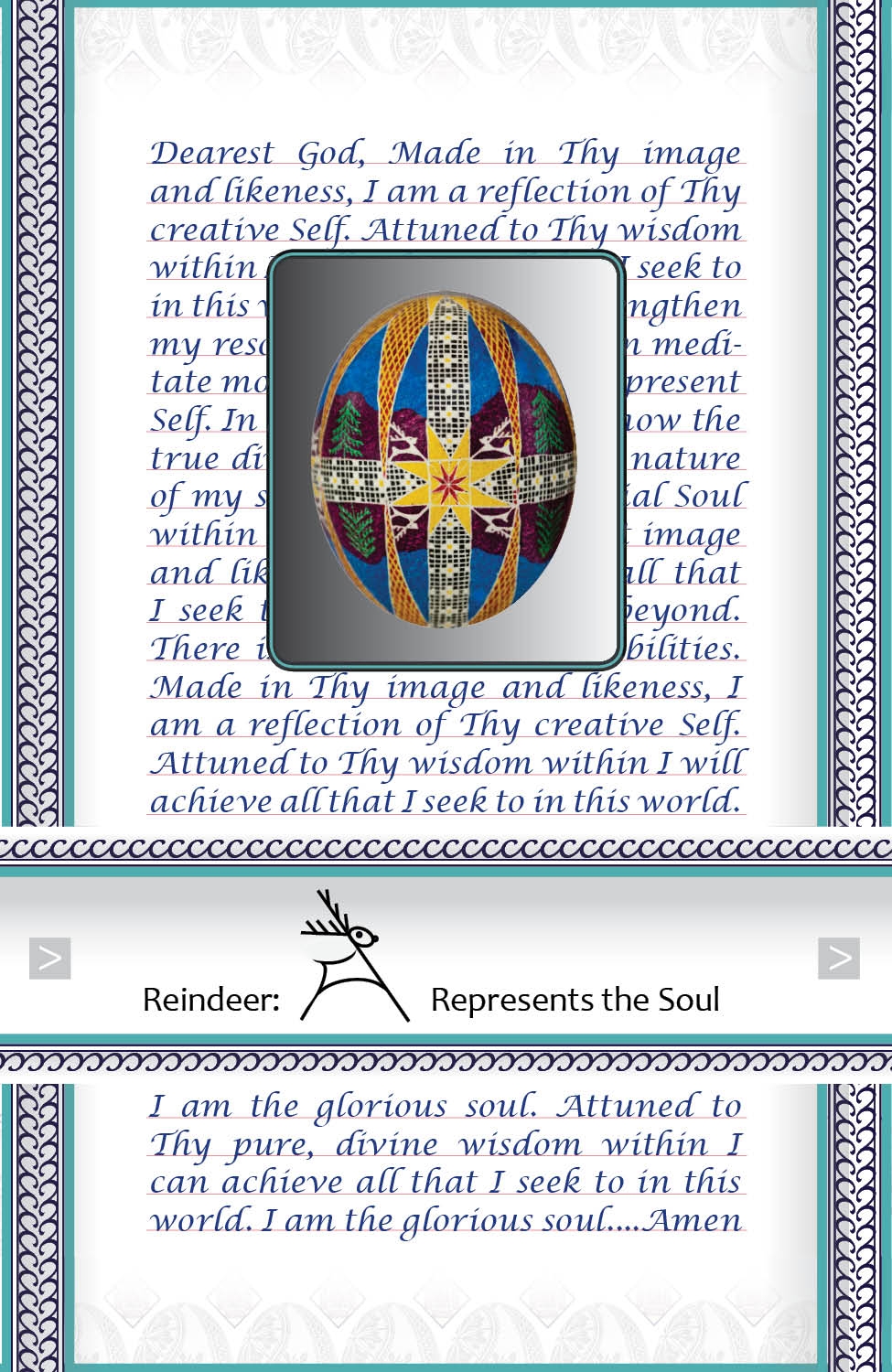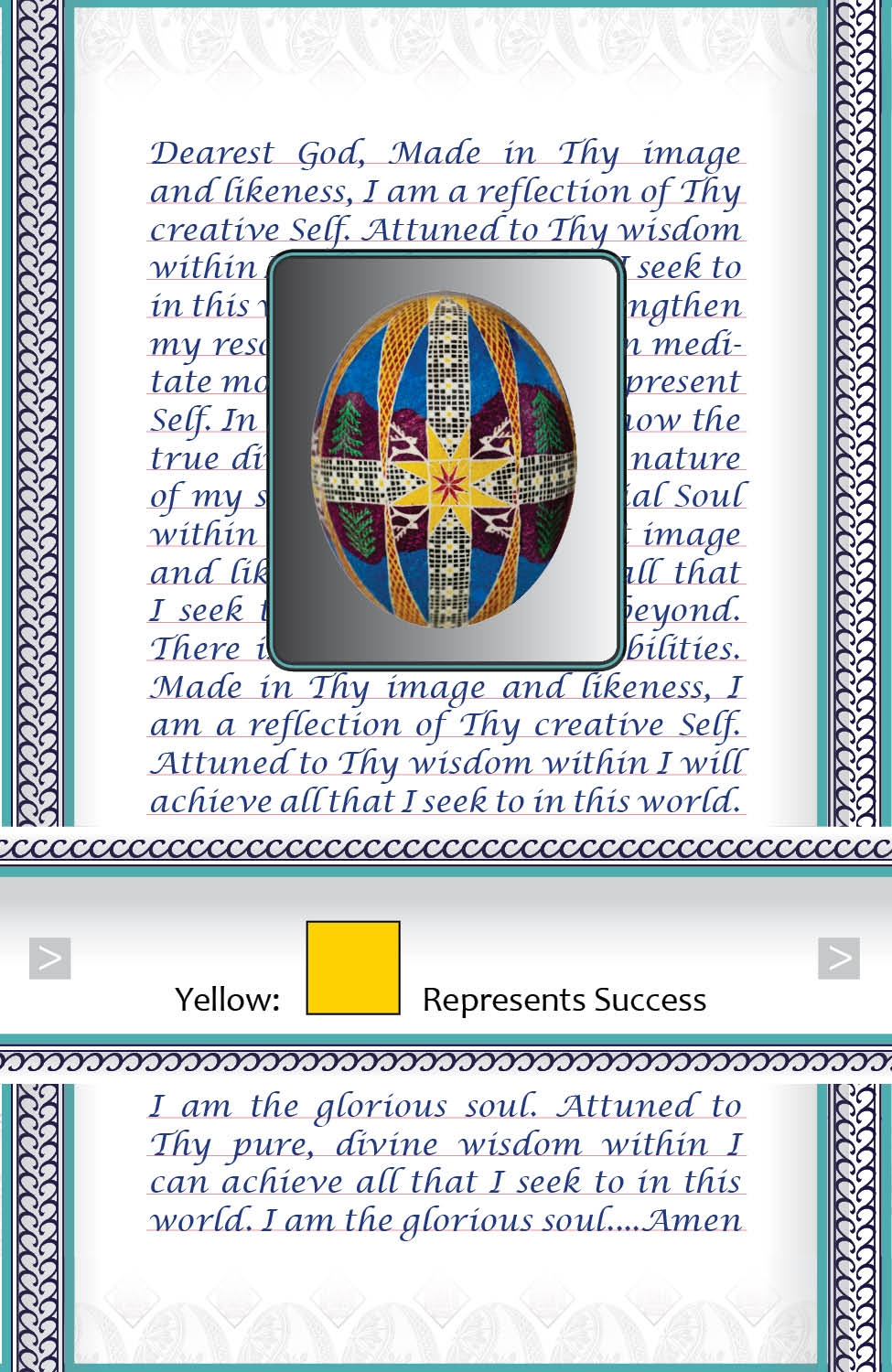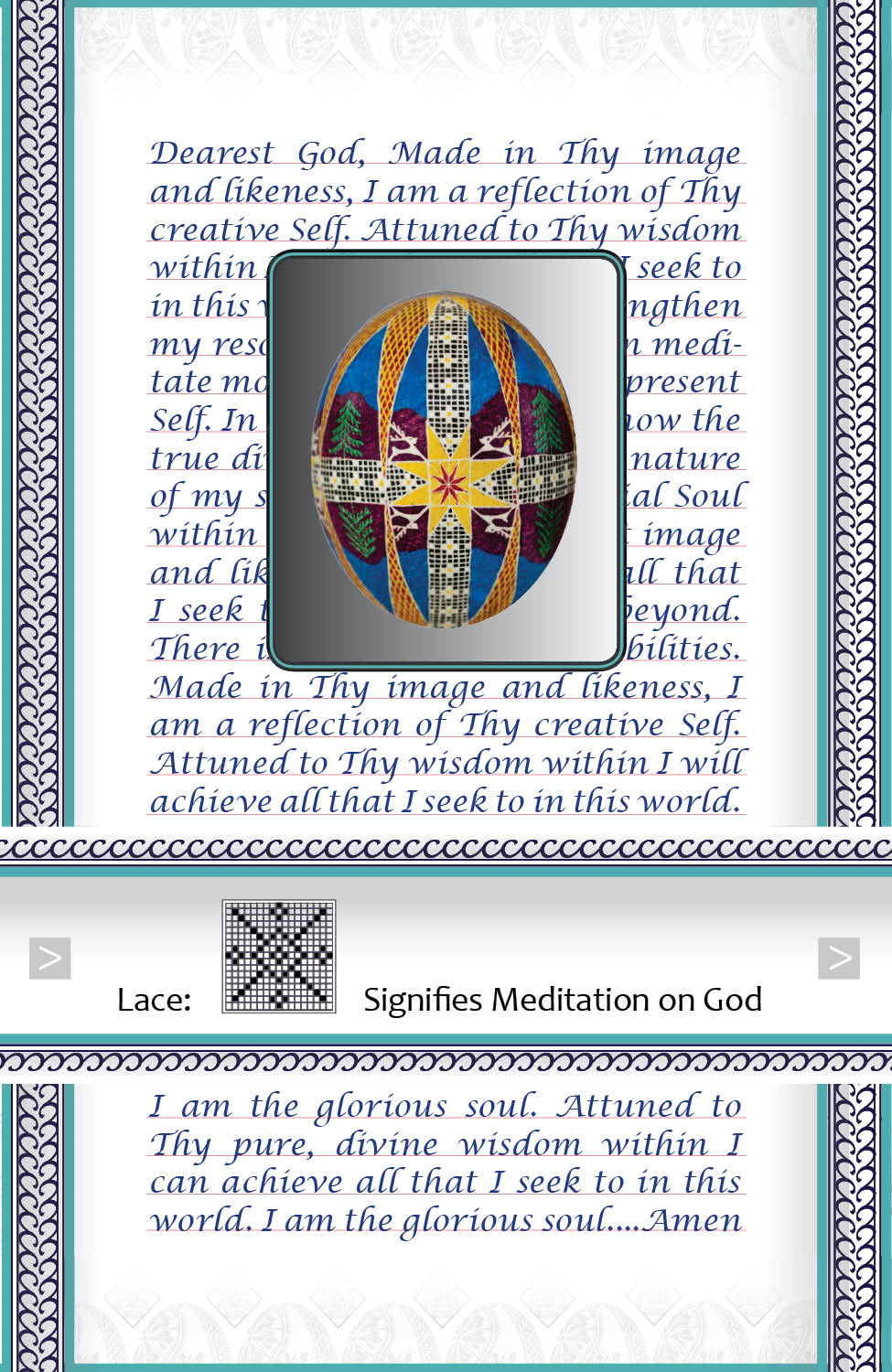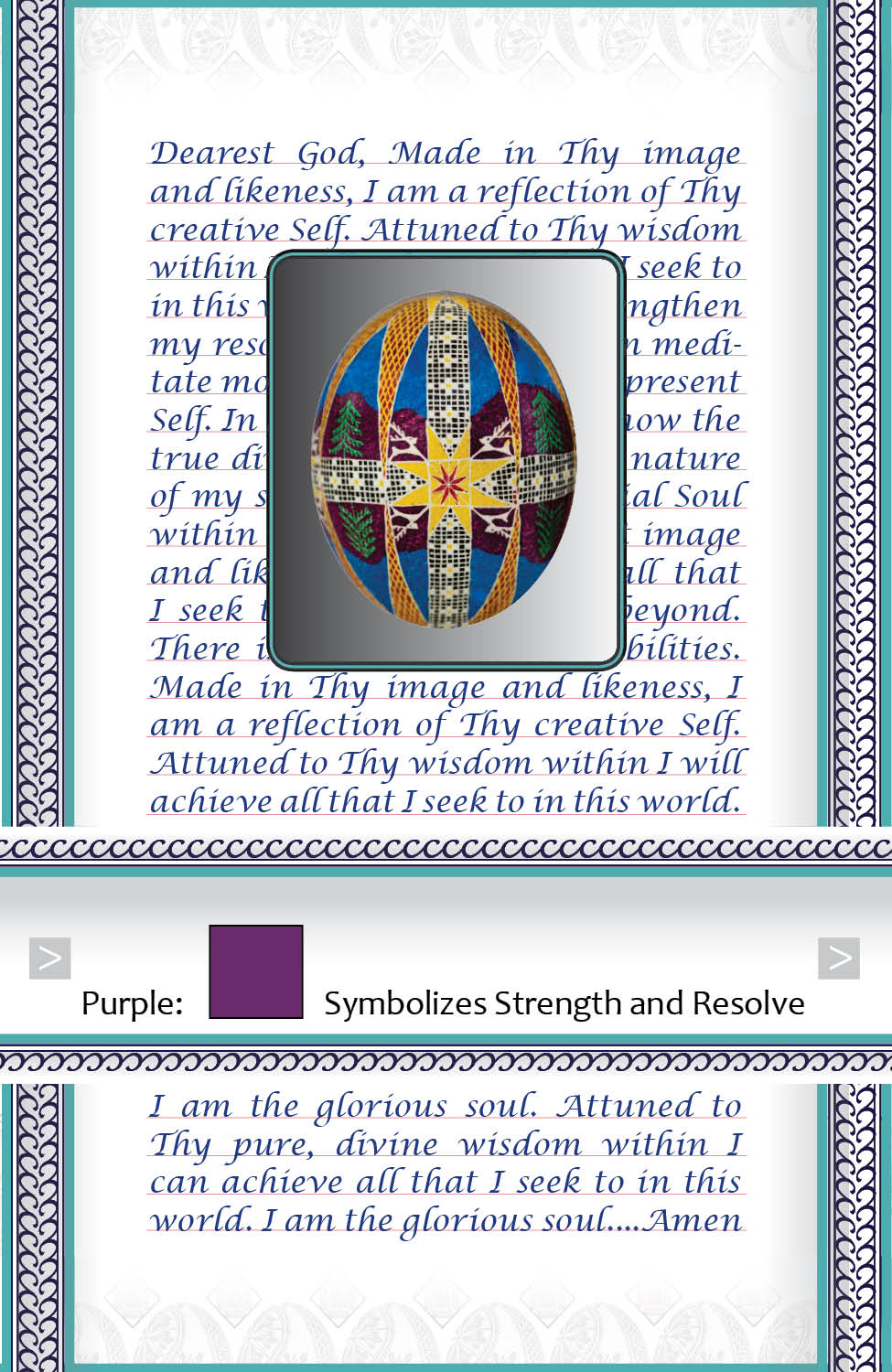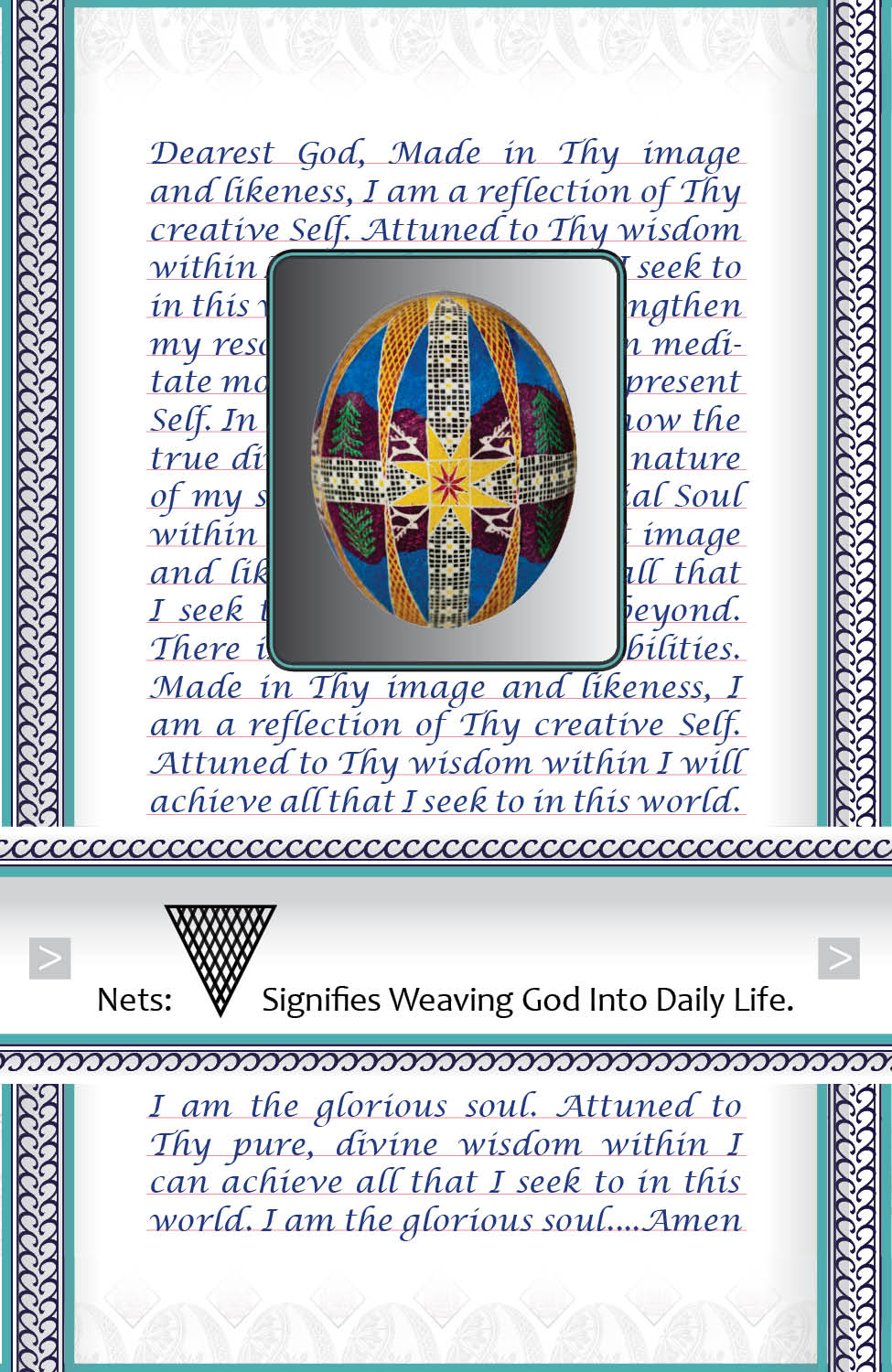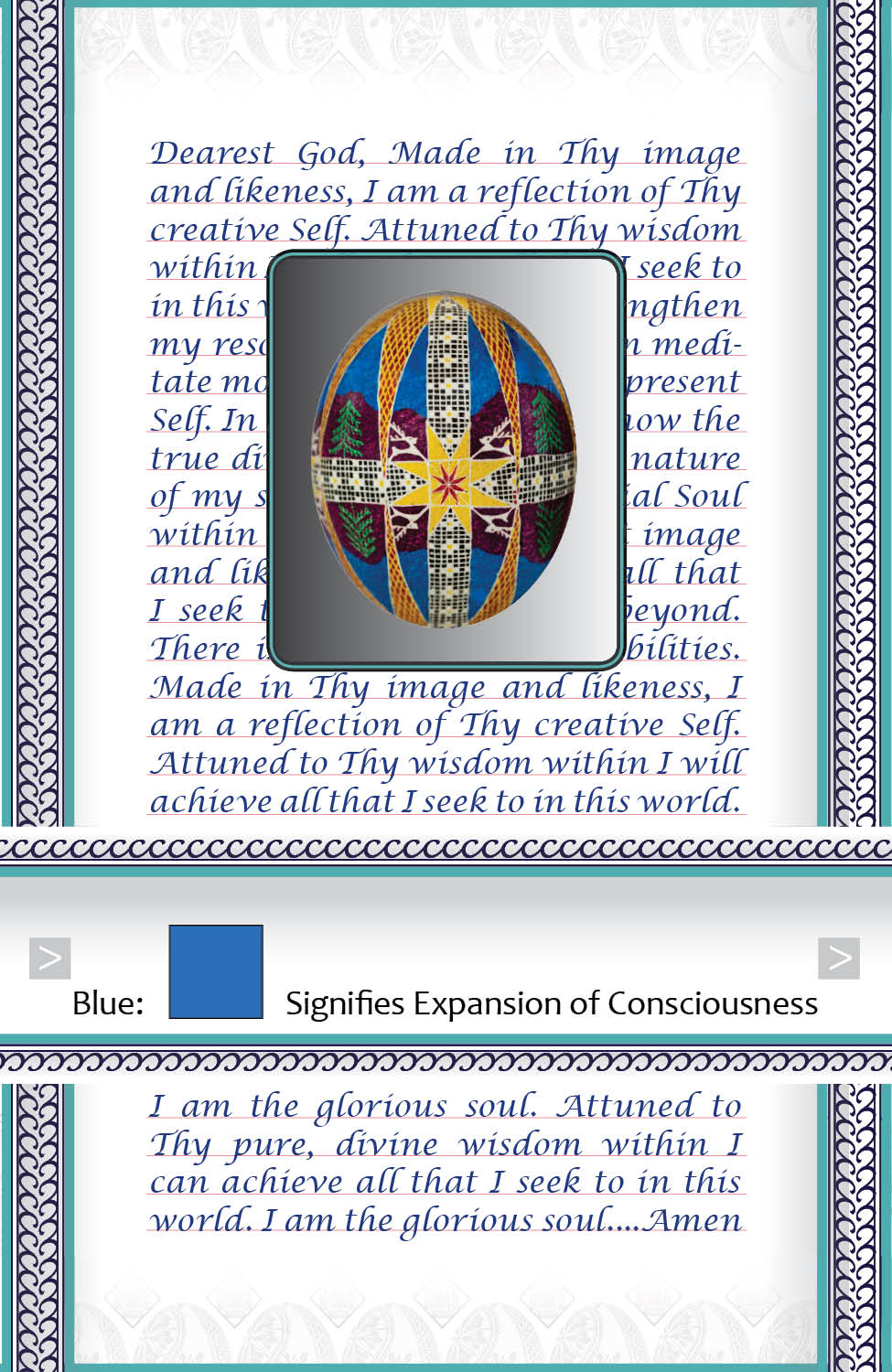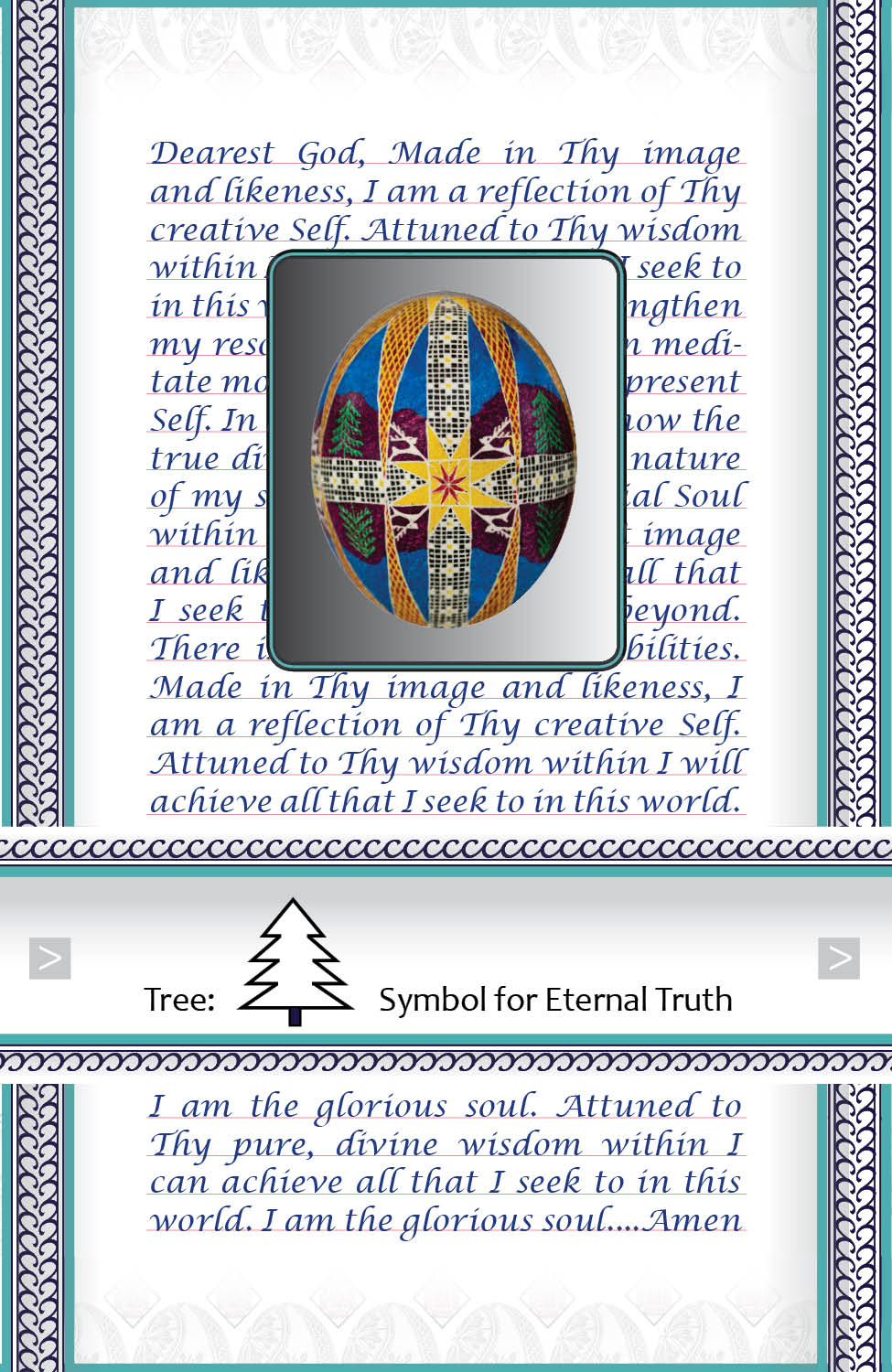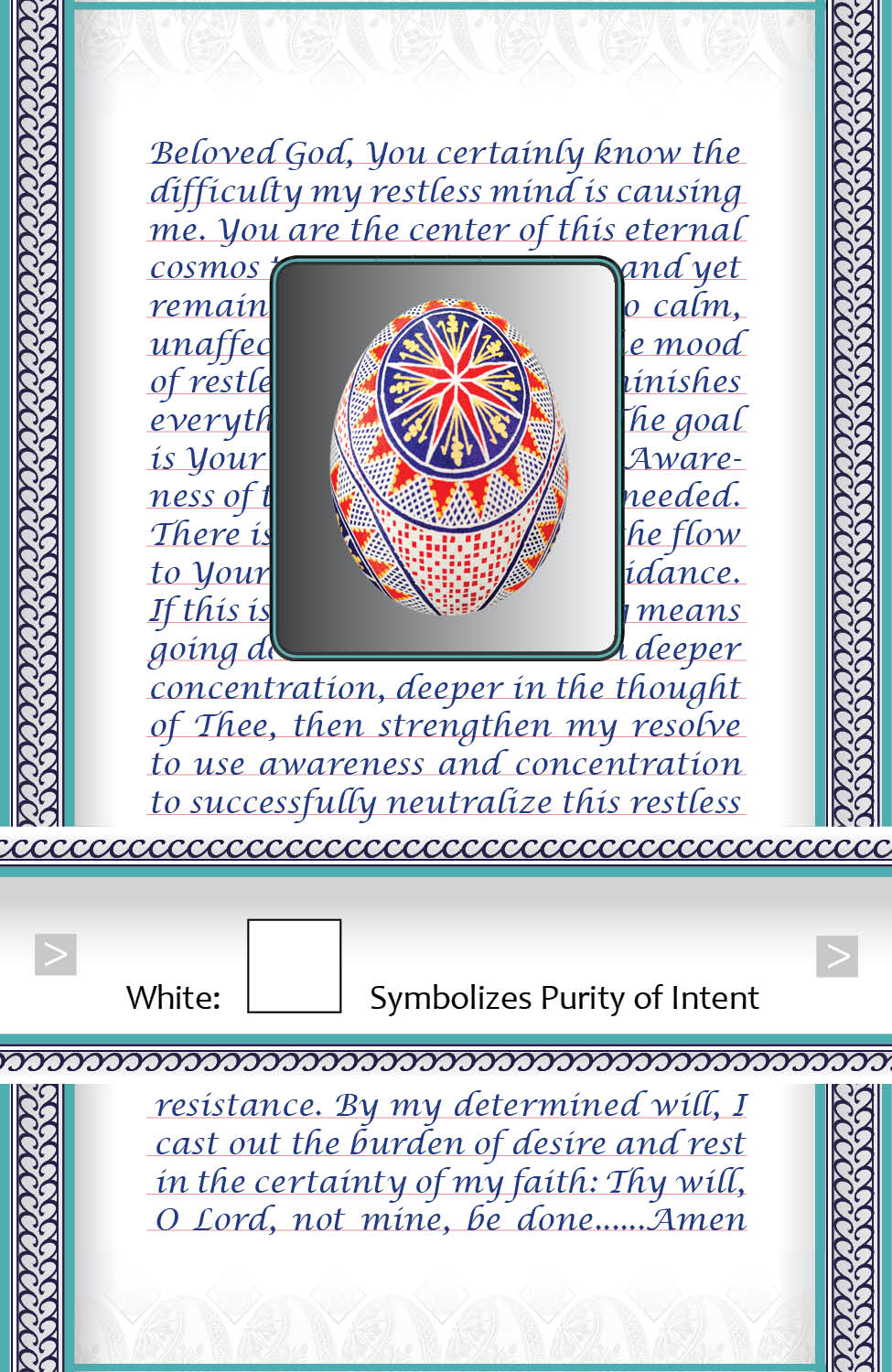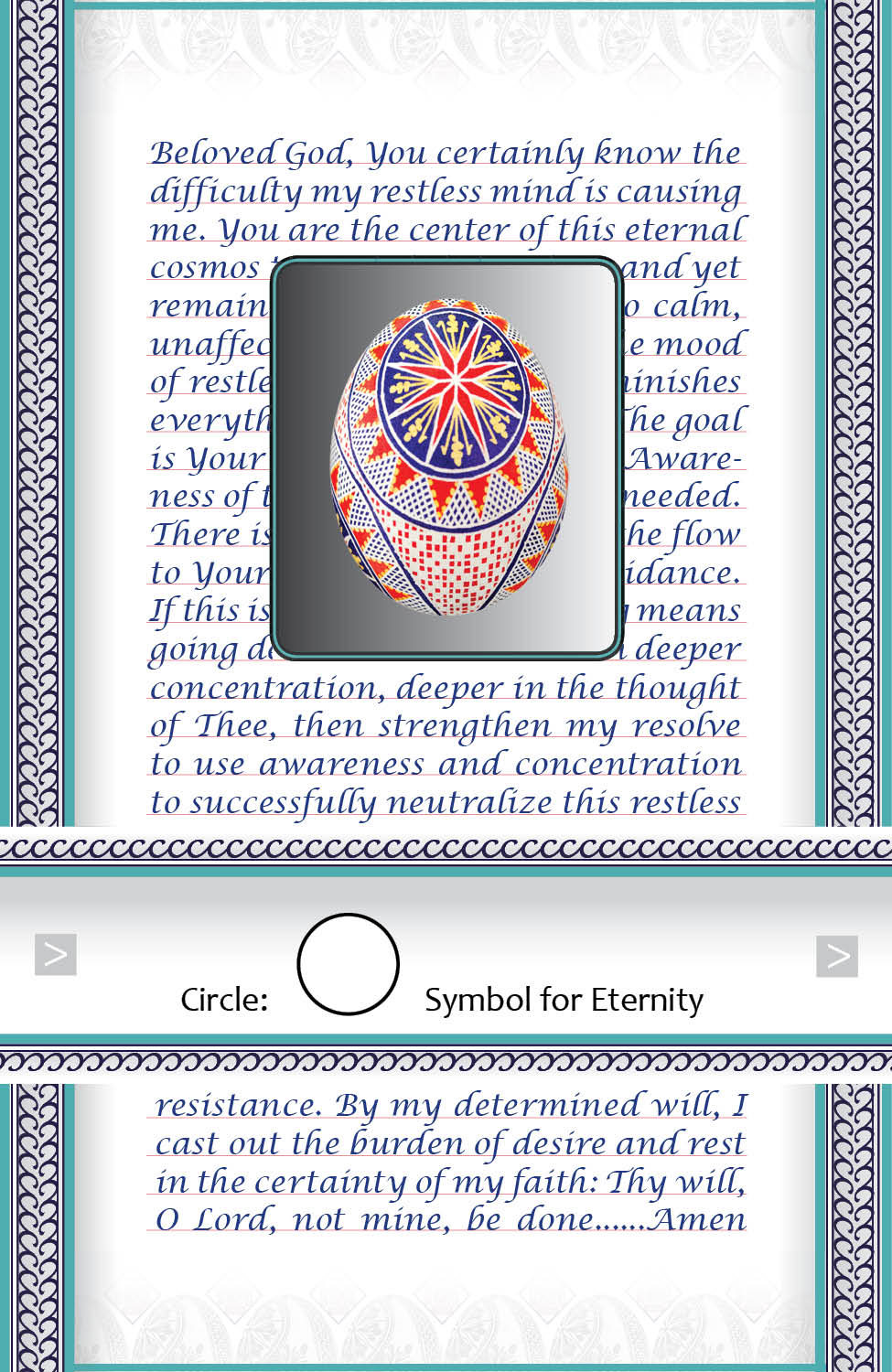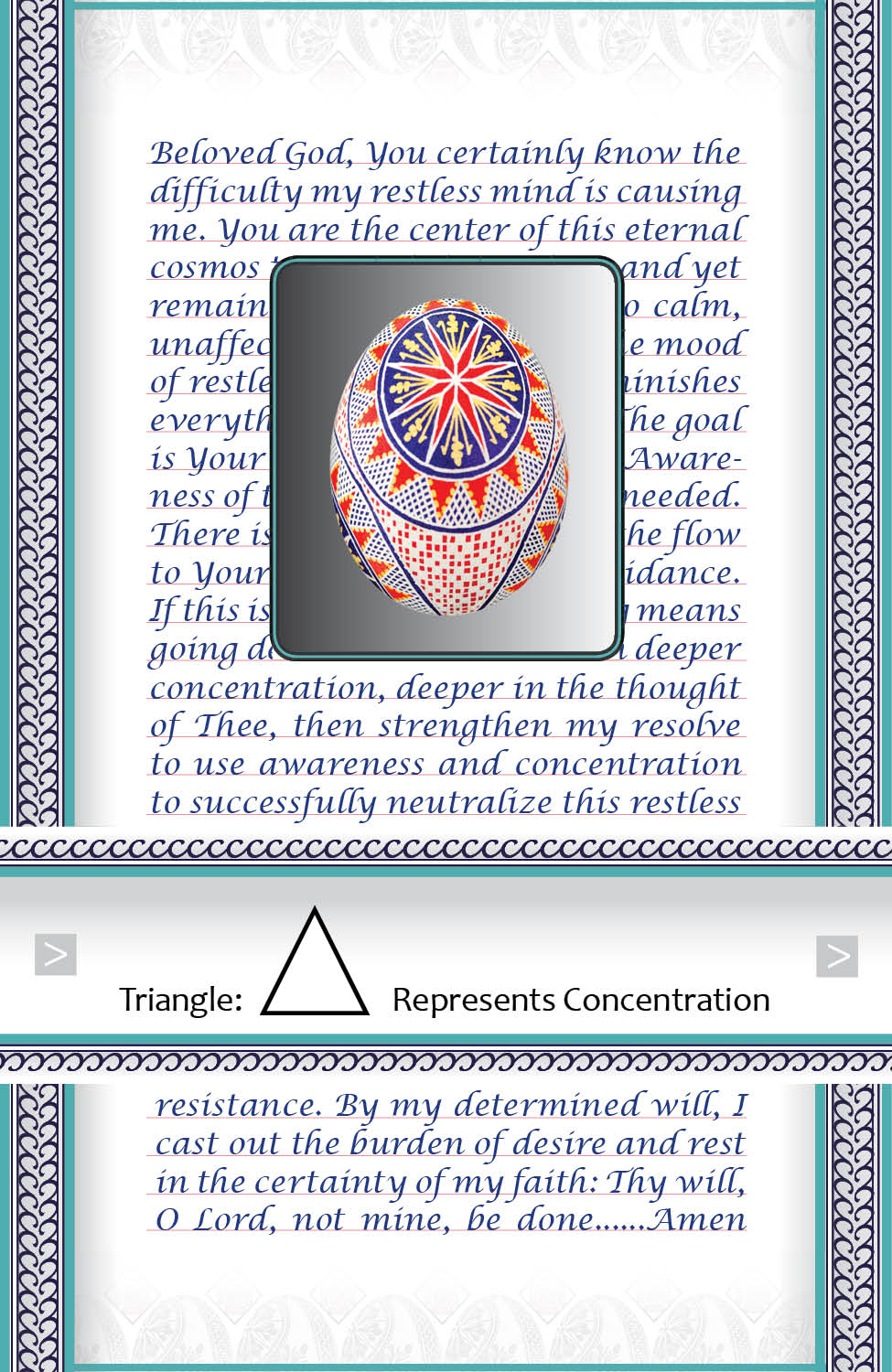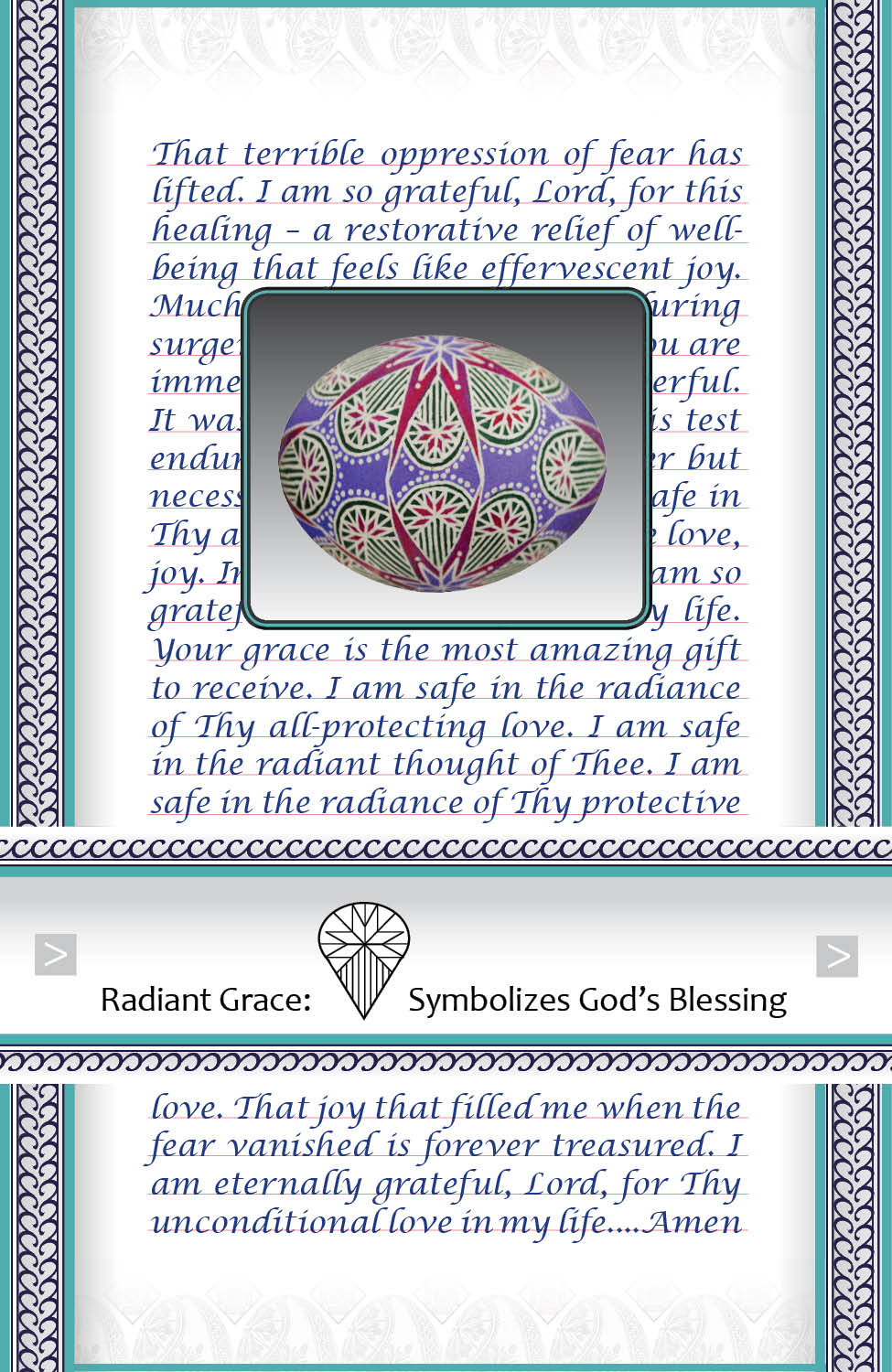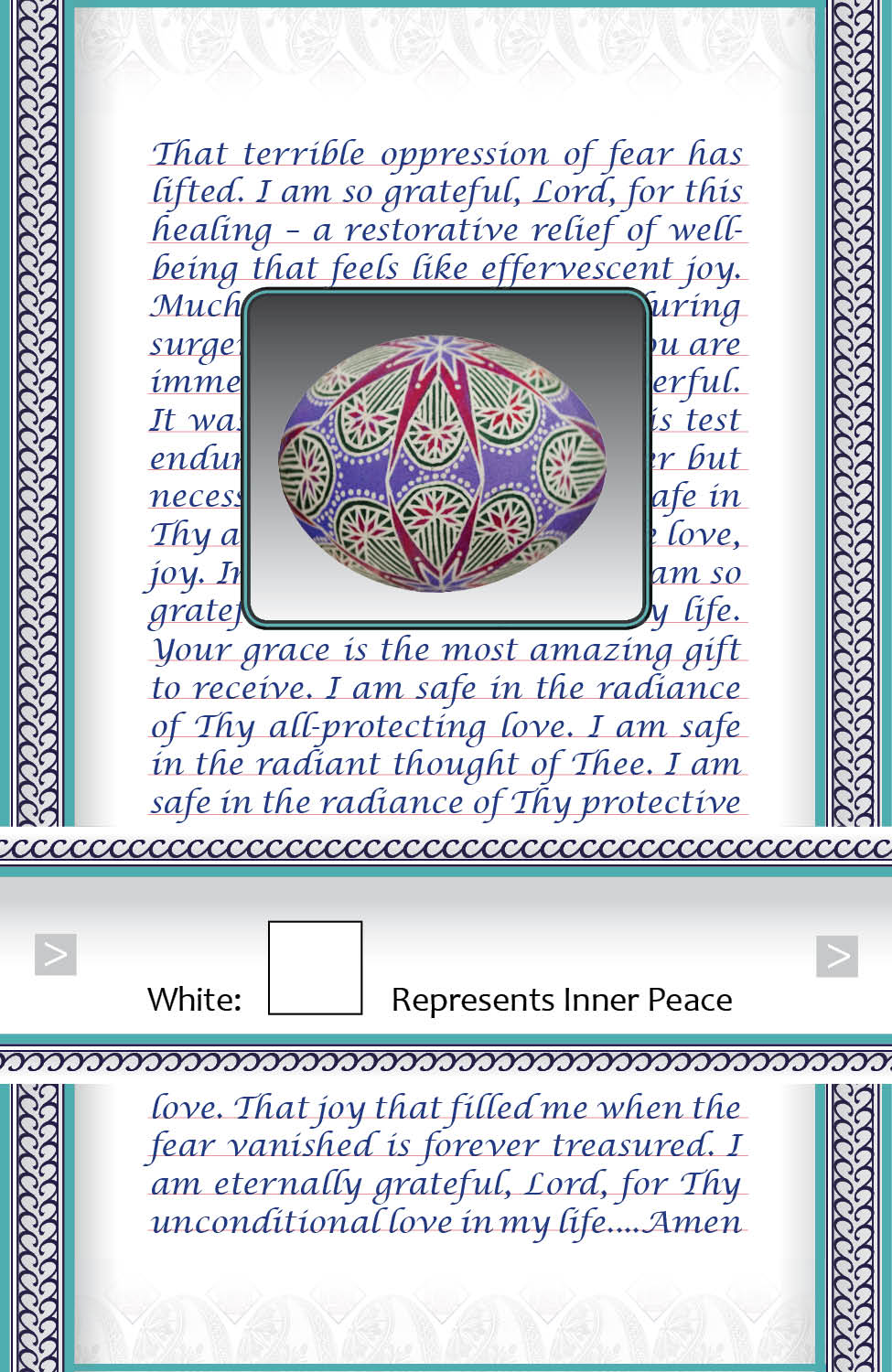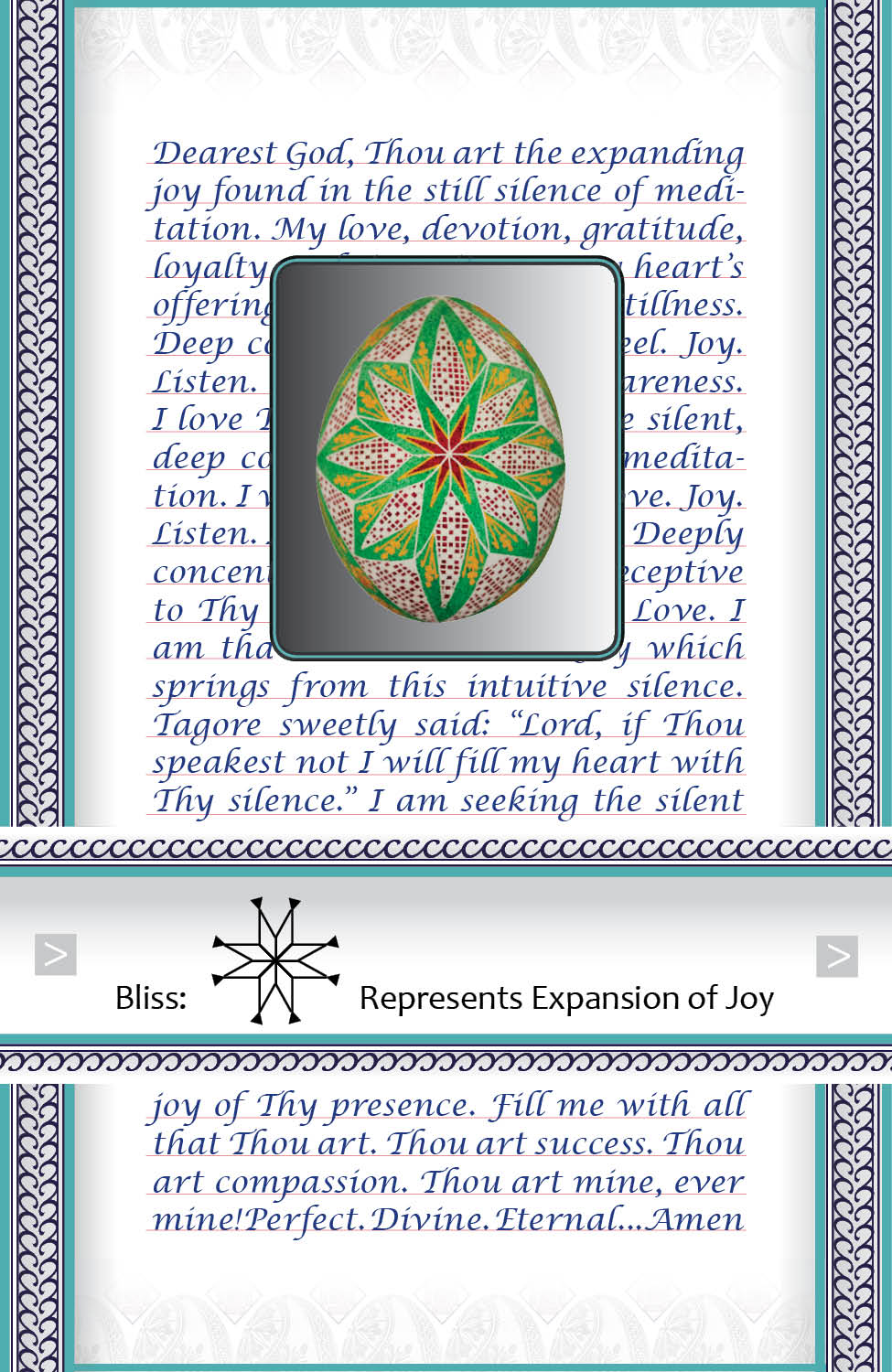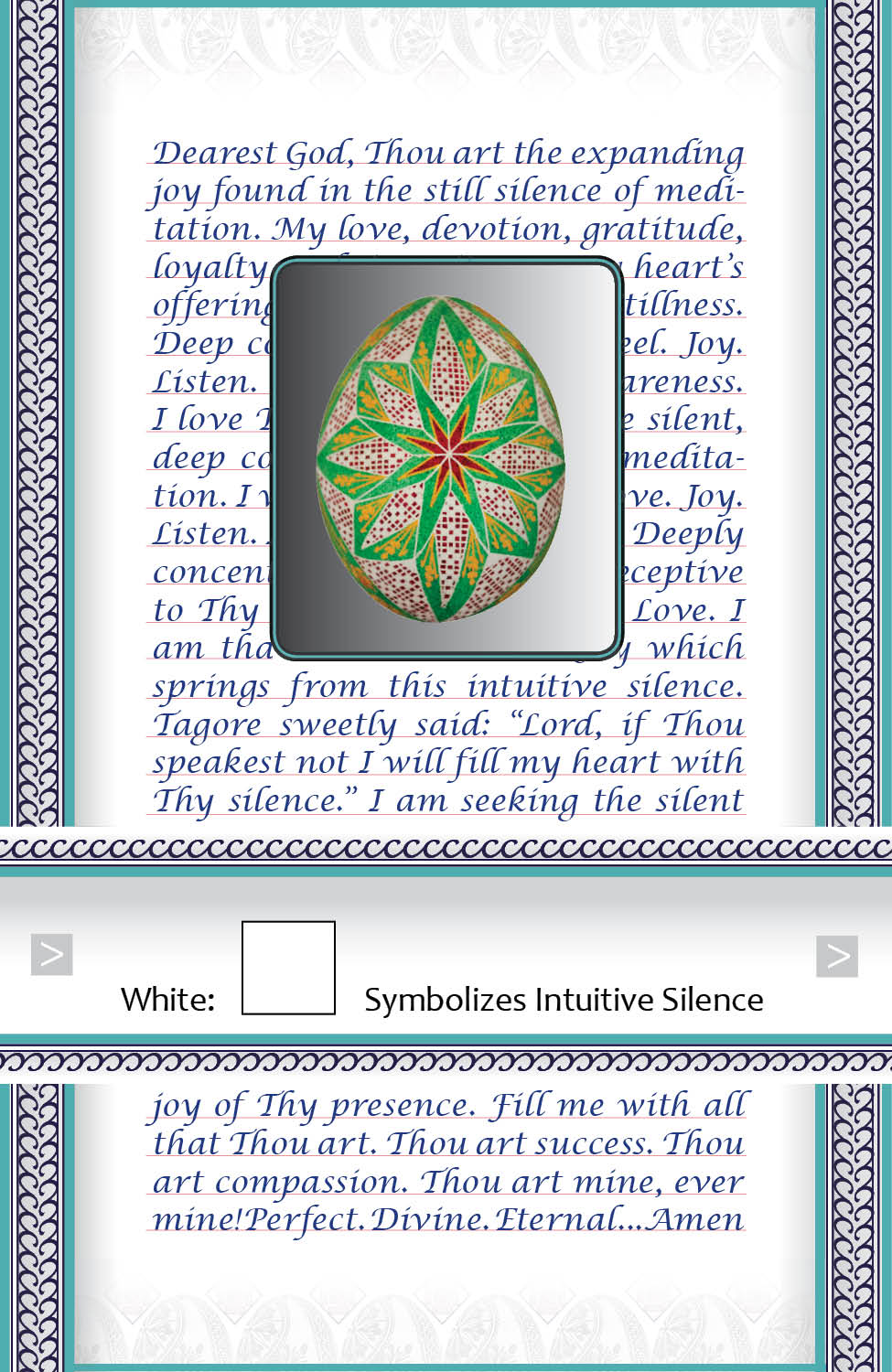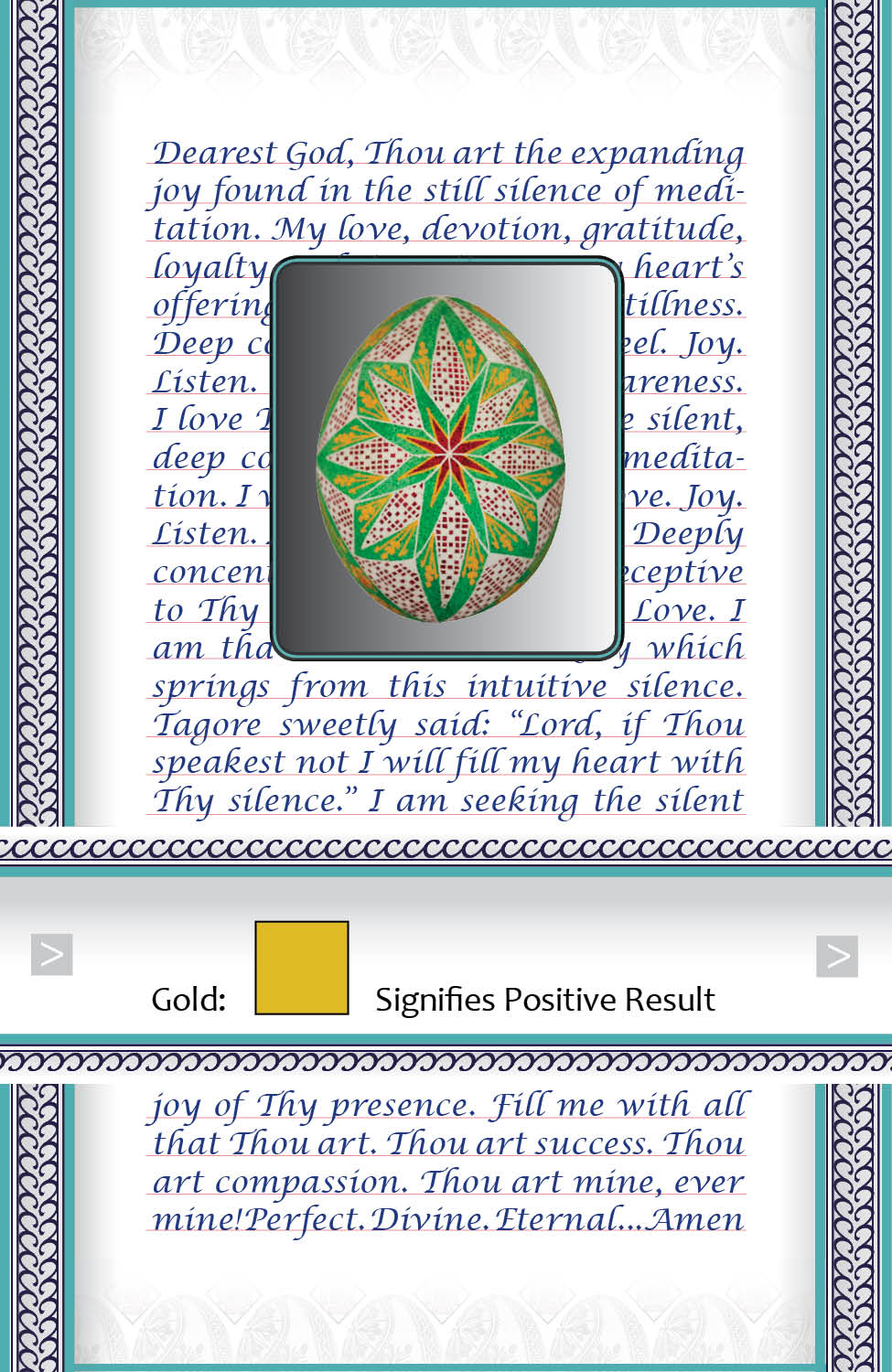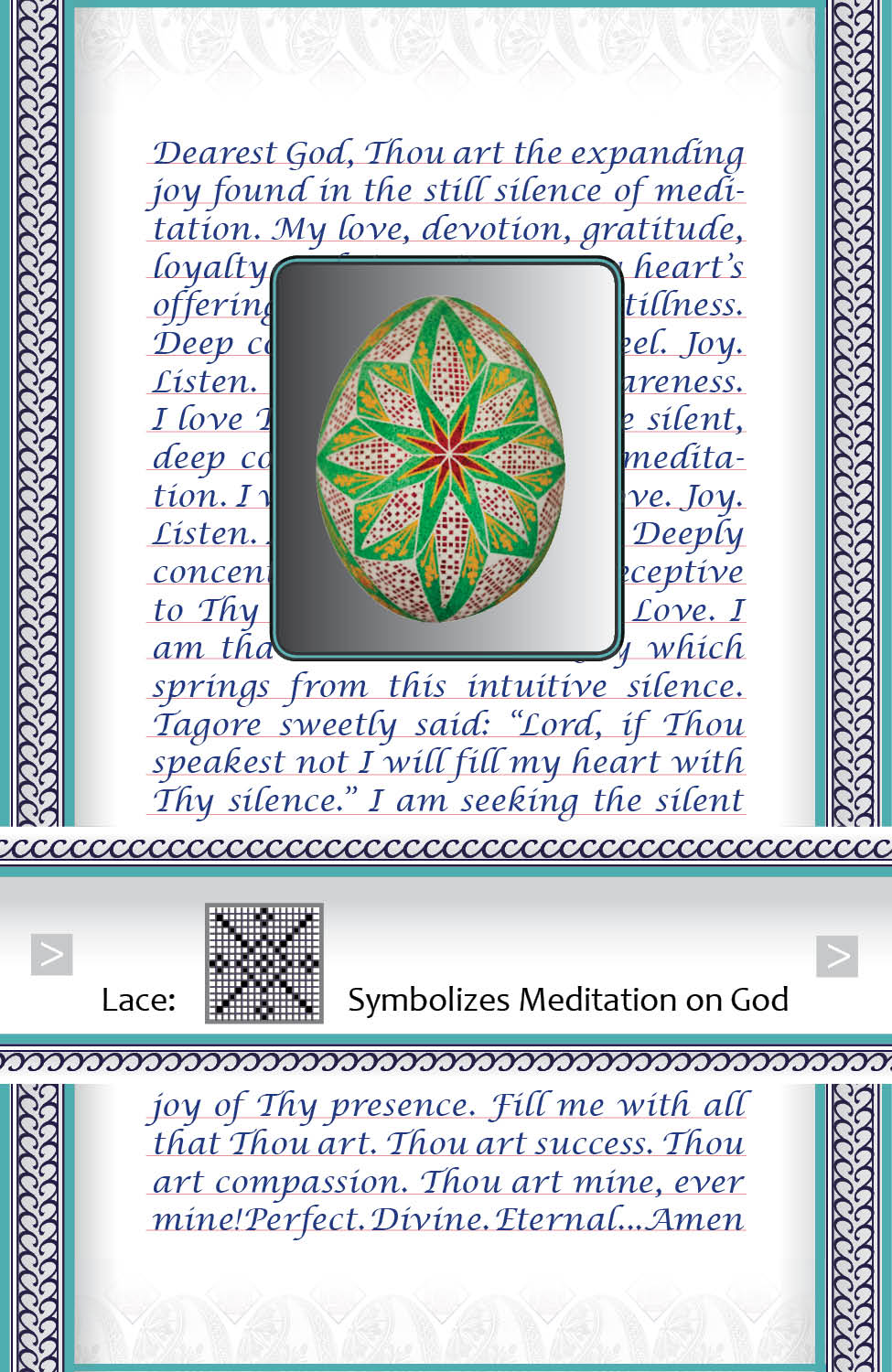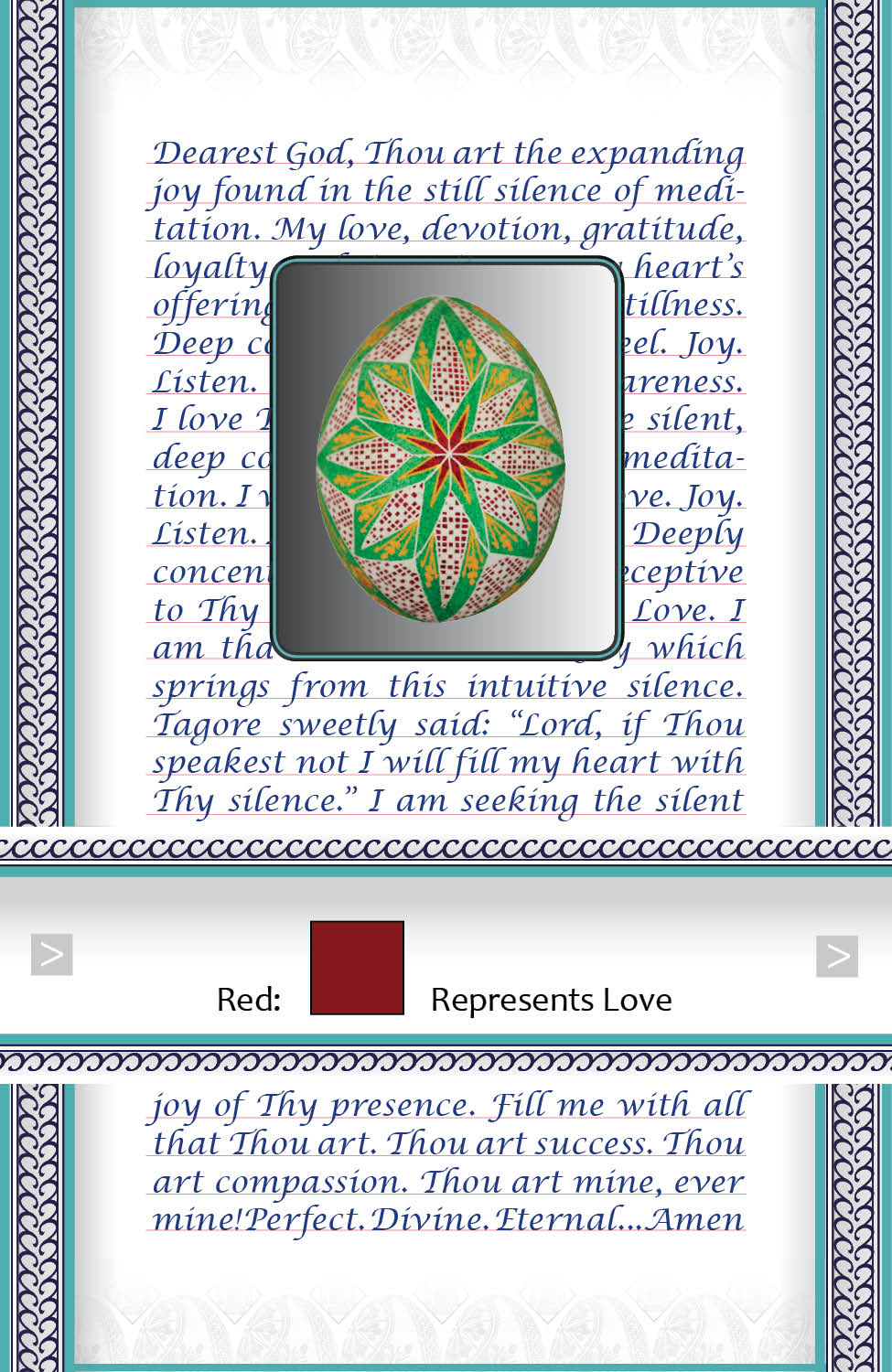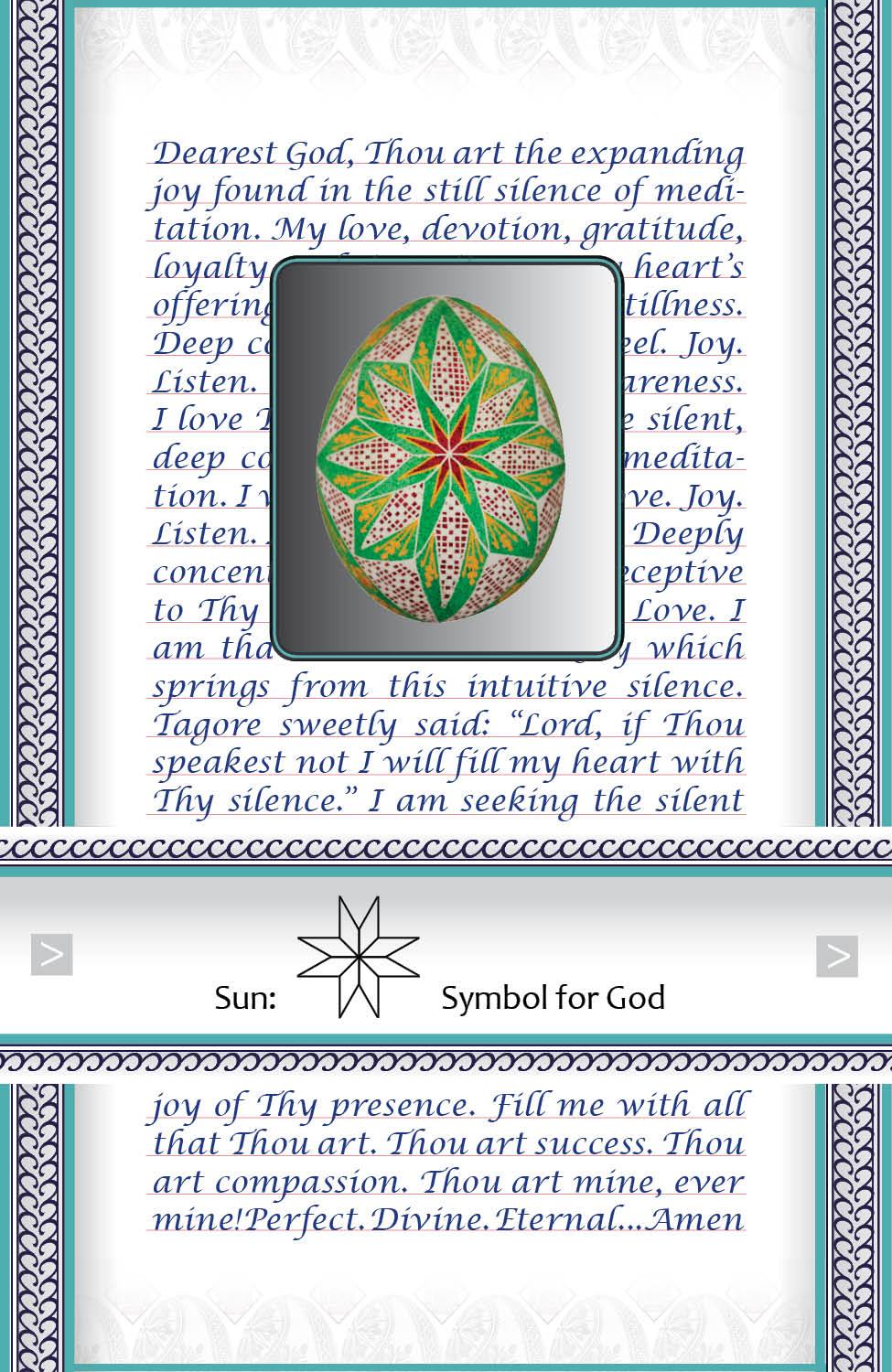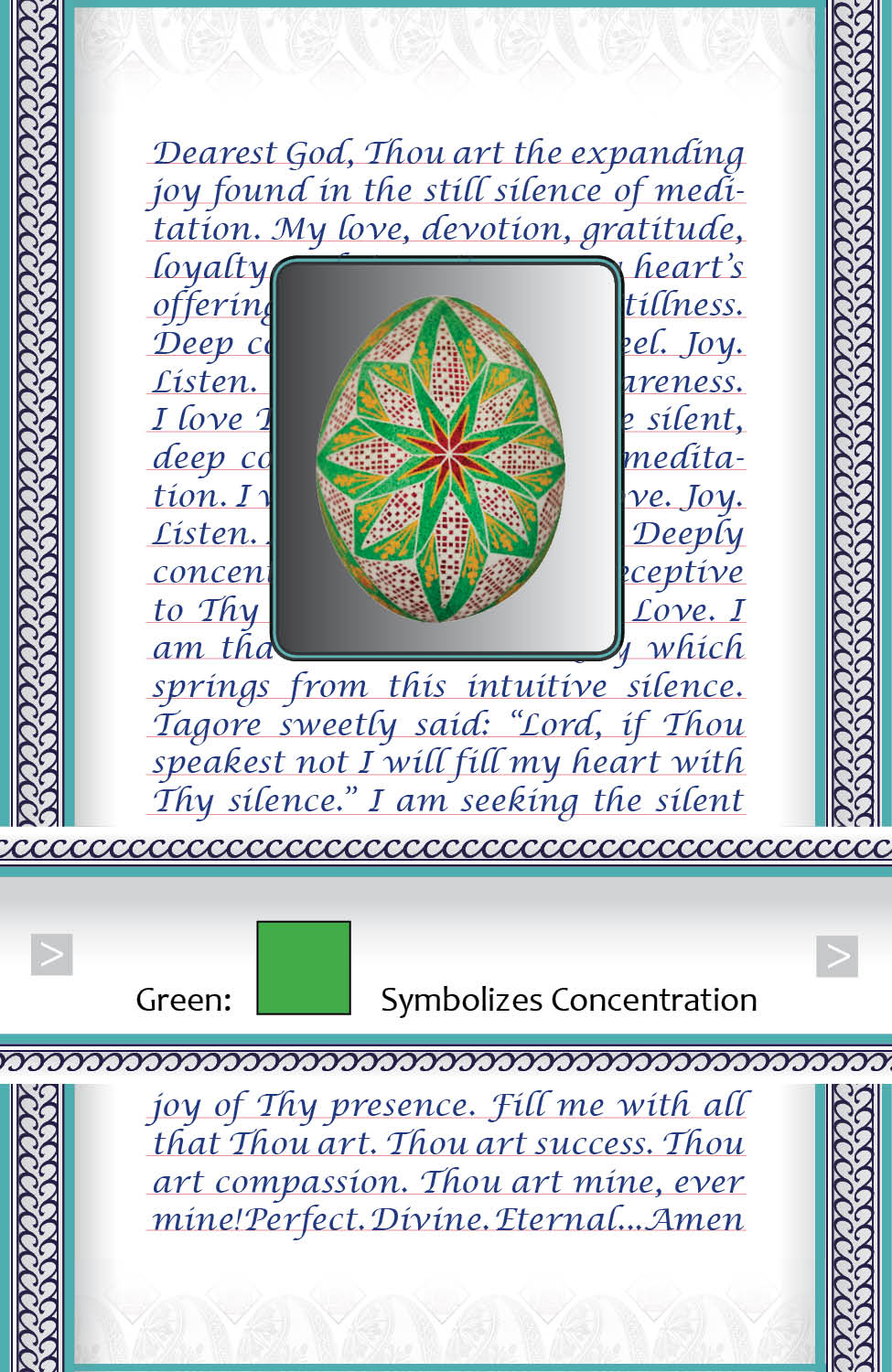The Spiritual Essence of Ukrainian Pysanky
Explanation
Pysanky Symbols
Examples
Pysanky
Pysanky (the traditional name for Ukrainian Easter eggs) and pysanka (refers to a single egg) originate in the Ukrainian verb pysaty – to write. Folklore related to pysanky indicates that the symbols used to create their beauty are a talismanic writing that makes God and His beneficence known.
Although cultural and ancestral significance is associated with each symbol, the prayer writer assigns personal meaning to each symbol based on the intention of their prayer.
Write Prayer
Scientific research has proven that goals are consistently more attainable when written. The popularity of bucket lists attests to this approach. In the corporate world, business plans are the written intention of what is to be achieved. Would it surprise you to know that success-affirming writing also applies to spiritual aspiration?
The Spiritual Practice of Ukrainian Pysanky
As a spiritual practice, the Ukrainian pysanky's goal is to increase awareness of God's omnipresent goodness. It’s a meditative approach that considers prayer simply as heartfelt conversation with God. The symbols – the words of the ancient writers – represent an outpouring of devotion, repetitive affirmations of soul-potential, statements of inspiring wisdom and requests for help and protection. Modern-day prayer writers find hand-writing words, expressing their heart's aspirations to God on paper, equally as effective as pysanky writing and decidedly more convenient.
Prayer is meant for God alone. The following examples are only intended to show how ancient symbols of God-centered aspiration translates into the spiritual essence of modern prayer writing. The symbols/words used will vary among prayer writers, as these reflect each individual's devotional nature and personal concept of God. As you relax into prayer writing, your own voice will emerge in heartfelt conversation with God. Prayer writing is for those seeking a way to spiritualize all that life presents and remain victoriously centered in the thought of God.
"Affirming Truth"
example #1
"Thy Will Be Done"
example #2
"Requesting Help"
example #3
"Expressing Gratitude"
example #4
"Attaining Peace"
example #5
"Be Still and Know That I Am God"
example #6
Copyright © 2017 Nancy Kopack.
All rights reserved.















